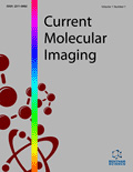Abstract
The use of whole-body imaging with 18F-fluorodeoxyglucose positron emission tomography/ computed tomography (FDG-PET/CT) is increasing in systemic infectious diseases, including fever of unknown origin (FUO), bacteraemia of unknown origin (BUO), and central nervous system infections, since the primary aim is to guide the clinicians towards potential sites of origin for further exploration, and a high sensitivity whole-body assessment is therefore pivotal. The literature on these subjects remains relatively sparse, but the available data and the widespread use in daily clinical practice seem justified in FUO and BUO, while results on CNS infections with systemic components are more equivocal. However, more systematic, well-designed prospective studies in defined patient populations are needed to clarify the controversies, including indications and cost effectiveness, scan parameters, and quantification.
Keywords: PET, PET/CT, FDG, infection, fever of unkown origin, bacteraemia, CNS.
Graphical Abstract
 16
16

